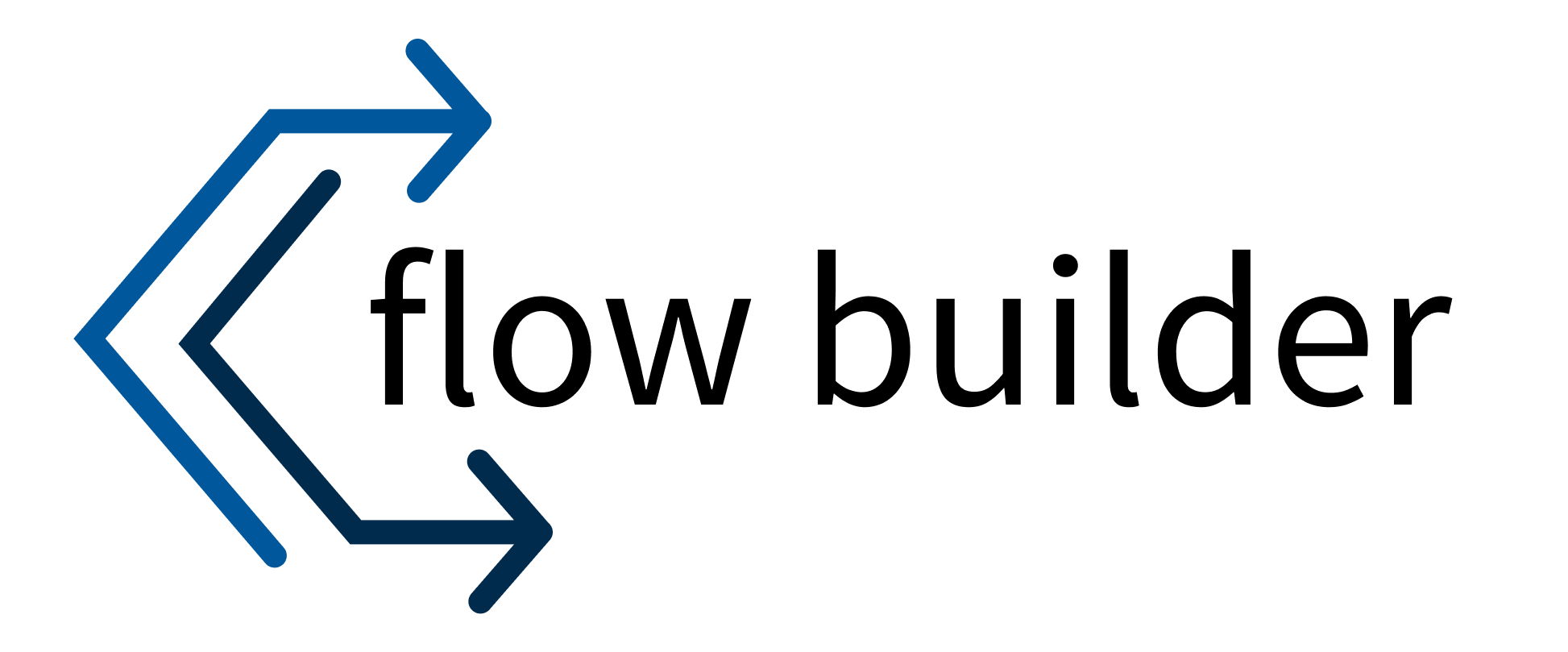Flutter动态布局构建插件flow_builder的使用
Flutter动态布局构建插件flow_builder的使用
Flutter开发中,flow_builder 插件提供了一种优雅的方式来创建和管理复杂的导航流程。它允许开发者根据应用的状态动态生成导航栈,从而简化了多步骤表单、向导式界面等场景下的页面流转逻辑。
一、简介
flow_builder 是一个用于构建基于状态变化的动态导航流的Flutter库。通过定义一个流动状态(Flow State),每当这个状态发生变化时,都会根据新的状态重新生成整个导航栈。这意味着你可以轻松地实现多步骤表单、向导式的用户引导等功能,而无需手动管理每个页面之间的转换。

二、使用方法
1. 定义流动状态 (Define a Flow State)
首先需要定义一个类来表示流动状态。例如,我们有一个 Profile 类,包含用户的姓名、年龄和体重信息:
class Profile {
const Profile({this.name, this.age, this.weight});
final String? name;
final int? age;
final int? weight;
Profile copyWith({String? name, int? age, int? weight}) {
return Profile(
name: name ?? this.name,
age: age ?? this.age,
weight: weight ?? this.weight,
);
}
}2. 创建 FlowBuilder (Create a FlowBuilder)
接下来,在你的应用中使用 FlowBuilder 来监听流动状态的变化,并根据当前状态生成相应的页面列表:
FlowBuilder<Profile>(
state: const Profile(),
onGeneratePages: (profile, pages) {
return [
MaterialPage(child: NameForm()),
if (profile.name != null) MaterialPage(child: AgeForm()),
];
},
);这里的关键是 onGeneratePages 回调函数,它会在每次流动状态改变时被调用,返回一个新的页面列表。
3. 更新流动状态 (Update the Flow State)
在具体的页面组件内部,可以通过 context.flow<T>().update 方法来更新流动状态:
class NameForm extends StatefulWidget {
@override
_NameFormState createState() => _NameFormState();
}
class _NameFormState extends State<NameForm> {
var _name = '';
void _continuePressed() {
context.flow<Profile>().update((profile) => profile.copyWith(name: _name));
}
@override
Widget build(BuildContext context) {
return Scaffold(
appBar: AppBar(title: const Text('Name')),
body: Center(
child: Column(
children: <Widget>[
TextField(
onChanged: (value) => setState(() => _name = value),
decoration: InputDecoration(
labelText: 'Name',
hintText: 'John Doe',
),
),
ElevatedButton(
child: const Text('Continue'),
onPressed: _name.isNotEmpty ? _continuePressed : null,
)
],
),
),
);
}
}在这个例子中,当用户输入完名字并点击“继续”按钮后,会触发 _continuePressed() 方法,进而更新流动状态中的 name 字段。
4. 完成流动 (Complete the Flow)
如果需要结束整个流动过程,可以使用 context.flow<T>().complete 方法:
class AgeForm extends StatefulWidget {
@override
_AgeFormState createState() => _AgeFormState();
}
class _AgeFormState extends State<AgeForm> {
int? _age;
void _continuePressed() {
context
.flow<Profile>()
.complete((profile) => profile.copyWith(age: _age));
}
@override
Widget build(BuildContext context) {
return Scaffold(
appBar: AppBar(title: const Text('Age')),
body: Center(
child: Column(
children: <Widget>[
TextField(
onChanged: (value) => setState(() => _age = int.tryParse(value)),
decoration: InputDecoration(
labelText: 'Age',
hintText: '42',
),
keyboardType: TextInputType.number,
),
ElevatedButton(
child: const Text('Continue'),
onPressed: _age != null ? _continuePressed : null,
)
],
),
),
);
}
}这里的 complete 方法不仅更新了流动状态,还标志着整个流动已经完成。
5. 使用自定义 FlowController (FlowController)
有时候你可能希望从子树外部控制流动,这时就可以使用 FlowController:
class MyFlow extends StatefulWidget {
@override
State<MyFlow> createState() => _MyFlowState();
}
class _MyFlowState extends State<MyFlow> {
late FlowController<Profile> _controller;
@override
void initState() {
super.initState();
_controller = FlowController(const Profile());
}
@override
Widget build(BuildContext context) {
return FlowBuilder(
controller: _controller,
onGeneratePages: ...,
);
}
@override
dispose() {
_controller.dispose();
super.dispose();
}
}通过这种方式,即使是在远离流动入口的地方,也可以方便地操作流动状态。
三、完整示例代码
为了更直观地理解如何使用 flow_builder,以下是一个完整的示例应用程序:
import 'package:flutter/material.dart';
import 'package:flow_builder/flow_builder.dart';
void main() => runApp(MyApp());
class MyApp extends StatelessWidget {
@override
Widget build(BuildContext context) {
return MaterialApp(
home: HomeScreen(),
);
}
}
class HomeScreen extends StatelessWidget {
@override
Widget build(BuildContext context) {
return Scaffold(
appBar: AppBar(title: Text('Home')),
body: Center(
child: ElevatedButton(
onPressed: () {
Navigator.of(context).push(MaterialPageRoute(builder: (_) => FlowExample()));
},
child: Text('Start Flow Example'),
),
),
);
}
}
class FlowExample extends StatelessWidget {
@override
Widget build(BuildContext context) {
return FlowBuilder<Profile>(
state: const Profile(),
onGeneratePages: (profile, list) {
return [
MaterialPage(child: NameForm()),
if (profile.name != null) MaterialPage(child: AgeForm()),
];
},
);
}
}
class NameForm extends StatefulWidget {
@override
_NameFormState createState() => _NameFormState();
}
class _NameFormState extends State<NameForm> {
var _name = '';
void _continuePressed() {
context.flow<Profile>().update((profile) => profile.copyWith(name: _name));
}
@override
Widget build(BuildContext context) {
return Scaffold(
appBar: AppBar(title: Text('Name')),
body: Center(
child: Column(
mainAxisAlignment: MainAxisAlignment.center,
children: <Widget>[
TextField(
onChanged: (value) => setState(() => _name = value),
decoration: InputDecoration(
labelText: 'Name',
hintText: 'John Doe',
),
),
SizedBox(height: 20),
ElevatedButton(
onPressed: _name.isNotEmpty ? _continuePressed : null,
child: Text('Continue'),
),
],
),
),
);
}
}
class AgeForm extends StatefulWidget {
@override
_AgeFormState createState() => _AgeFormState();
}
class _AgeFormState extends State<AgeForm> {
int? _age;
void _continuePressed() {
context.flow<Profile>().complete((profile) => profile.copyWith(age: _age));
}
@override
Widget build(BuildContext context) {
return Scaffold(
appBar: AppBar(title: Text('Age')),
body: Center(
child: Column(
mainAxisAlignment: MainAxisAlignment.center,
children: <Widget>[
TextField(
onChanged: (value) => setState(() => _age = int.tryParse(value)),
decoration: InputDecoration(
labelText: 'Age',
hintText: '42',
),
keyboardType: TextInputType.number,
),
SizedBox(height: 20),
ElevatedButton(
onPressed: _age != null ? _continuePressed : null,
child: Text('Finish'),
),
],
),
),
);
}
}以上代码展示了如何使用 flow_builder 创建一个多步骤表单,包括名称和年龄两个字段的输入。当所有必填项都填写完毕后,整个流动将被标记为完成,并且可以返回到主屏幕。
更多关于Flutter动态布局构建插件flow_builder的使用的实战系列教程也可以访问 https://www.itying.com/category-92-b0.html
当然,flow_builder 是一个强大的 Flutter 插件,用于构建动态和灵活的布局。它基于 Flow widget,允许开发者根据自定义的逻辑来排列子元素。下面是一个简单的示例,展示了如何使用 flow_builder 来创建一个动态布局。
首先,确保你的 Flutter 项目已经添加了 flow_builder 依赖。在 pubspec.yaml 文件中添加以下依赖:
dependencies:
flutter:
sdk: flutter
flow_builder: ^latest_version # 替换为实际的最新版本号然后运行 flutter pub get 来获取依赖。
接下来,你可以在你的 Dart 文件中使用 flow_builder。以下是一个完整的示例,展示了如何使用 FlowBuilder 来创建一个简单的动态布局:
import 'package:flutter/material.dart';
import 'package:flow_builder/flow_builder.dart';
void main() {
runApp(MyApp());
}
class MyApp extends StatelessWidget {
@override
Widget build(BuildContext context) {
return MaterialApp(
home: Scaffold(
appBar: AppBar(
title: Text('Flow Builder Example'),
),
body: FlowBuilderExample(),
),
);
}
}
class FlowBuilderExample extends StatefulWidget {
@override
_FlowBuilderExampleState createState() => _FlowBuilderExampleState();
}
class _FlowBuilderExampleState extends State<FlowBuilderExample> {
// 示例数据,用于动态生成子元素
final List<Offset> positions = [
Offset(50, 50),
Offset(150, 50),
Offset(50, 150),
Offset(150, 150),
];
final List<Color> colors = [
Colors.red,
Colors.blue,
Colors.green,
Colors.yellow,
];
@override
Widget build(BuildContext context) {
return Padding(
padding: const EdgeInsets.all(16.0),
child: FlowBuilder(
delegate: FlowDelegateExample(positions: positions),
children: List.generate(
positions.length,
(index) => Container(
width: 50,
height: 50,
color: colors[index],
),
),
),
);
}
}
class FlowDelegateExample extends FlowDelegate {
final List<Offset> positions;
FlowDelegateExample({required this.positions});
@override
Size getSize(BoxConstraints constraints) {
// 返回 FlowBuilder 的总大小,这里简单地设置为包含所有子元素的范围
double width = positions.map((offset) => offset.dx + 50).reduce((a, b) => math.max(a, b));
double height = positions.map((offset) => offset.dy + 50).reduce((a, b) => math.max(a, b));
return Size(width, height);
}
@override
Offset getPositionForChild(int i, Size size) {
// 返回每个子元素的位置
return positions[i];
}
@override
bool shouldRepaint(covariant FlowDelegate oldDelegate) {
// 判断是否需要重绘
return oldDelegate.positions != positions;
}
}在这个示例中:
- 我们创建了一个
FlowBuilderExamplewidget,它包含了一个FlowBuilder。 FlowBuilder使用了一个自定义的FlowDelegateExample作为其委托。FlowDelegateExample实现了FlowDelegate接口,并提供了getSize和getPositionForChild方法,用于定义 Flow 的大小和子元素的位置。getPositionForChild方法根据positions列表中的值来确定每个子元素的位置。getSize方法计算 Flow 的总大小,以确保所有子元素都在 Flow 的范围内。
运行这个示例,你会看到一个包含四个彩色方块的动态布局,这些方块根据 positions 列表中的值进行排列。你可以根据需要修改 positions 和 colors 列表来动态改变布局和样式。







